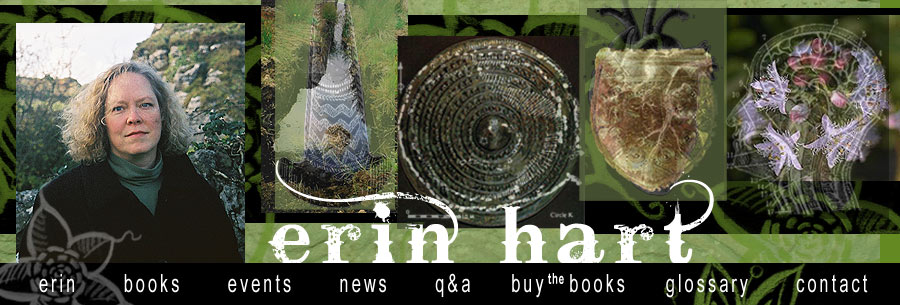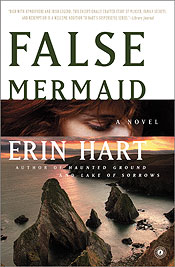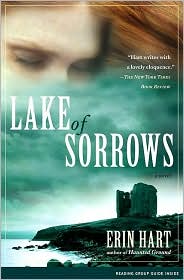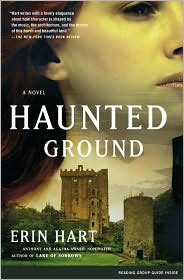When I speak to library patrons and book clubs, I often spend as much time talking about bogs as about the writing process. And I included Ireland's turf-cutting controversy in the opening chapter of my first book,
Haunted Ground, way back in the mid 1990s:
Chilblains were the farthest thing from Brendan’s mind this unusually sun-drenched late-April morning. A steady westerly breeze swept over the bog, chasing high clouds across the watery blue of the sky, and teasing the moisture from the turf. Good drying today, his father would have said. Brendan worked in his shirtsleeves; his wool jacket, elbows permanently jointed from constant wearing, lay on the bank above his head. He paused, balancing his left arm on the handle of the upright sleán, and, with one rolled-up sleeve, mopped the sweat from his forehead, pushing away the damp, dark hair that stuck there. The skin on his face and forearms was beginning to feel the first pleasant tightness of a sunburn. Hunger was strong upon him at the moment, but just beyond it was an equally hollow feeling of anxiety. This might be the last year he could cut turf on his own land without interference. The thought of it burned in the pit of his stomach. As he clambered up the bank to fetch the handkerchief from his coat pocket, he searched the horizon for a bicycle.
That plot thread was prompted by some signs I'd seen posted on the roadside in east Galway while driving around on a research trip.
 |
| Protesting the imposition of bog licenses, East Galway, around 1999. |
I also included Special Areas of Conservation in
The Book of Killowen, where one of the characters is cutting peat from the bottom of a protected bog, and selling it for use as a beauty product. There are a few spas in Ireland where you can sign up to soak in a peat-infused bath, which I actually had to try in the name of research, of course. More on that later (with pictures!)...
Just this week, there's more controversy, as turf-cutters near Killimor in County Galway are cutting with machines in defiance of a ban on cutting turf from their own plots. The European Union has designated the bog in question as a Special Area of Conservation, which means turf is not to be cut there. But the families have been cutting in the same bogs for generations, and resent what they consider government intrusion. Turf-cutting rights, called 'turbary rights' often accompany the sale or transfer of property and farmland.
The controversy is made all the more complicated by the fact that Bord na Móna, the semi-state body that's been in charge of Irish boglands, has been strip-mining peat in the endangered high bogs of the Midlands for a hundred years, and continues to do so. They cut loose peat by the ton, and burn it in power plants to generate electricity.
BnM has been slowing down, but only because all the bogs have been cut away, and there's nothing left. The power stations are closing, and so are the jobs that the peat extraction has generated for the past century. My husband Paddy worked on Bord na Móna bogs, as did his father. It was the best job going in many parts of the Midlands.
 |
| Christy O'Brien, my father-in-law, working out on the bog with his mate Tommy Wright. |
You can read a VERY recent article about the scofflaws who cut peat from a protected bog in today's
Connaght Tribune:
Turf wars re-ignite as cutters defy law
Thursday, 08 May 2014 07:00 Written by Ciaran Tierney
http://www.connachttribune.ie/galway-news/item/2830-turf-wars-re-ignite-as-cutters-defy-law
Thanks very much to Bridget Nicholson for sharing this article!
 |
| Sods of machine-cut turf from a County Offaly high bog, back around 2003. |















